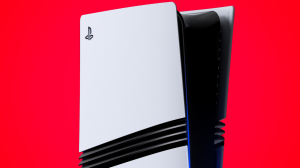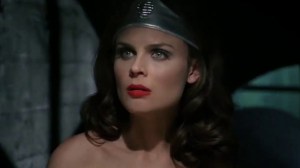
It was bound to happen eventually – given the huge (unmet) demand for the NES Classic Edition, you knew counterfeiters were going to attempt to take advantage, and sure enough, it looks like the first round of competent NES Classic fakes have hit the market.
Videos by ComicBook.com
Posters on the NeoGAF forums recently noticed fairly convincing NES Classic Edition forgeries showing up on various Chinese online retailers like AliExpress. Most of those listing have since been pulled, but these fakes have now taken over eBay and other American re-selling sites, where they’re being presented as the real deal. Here’s a typical example.
Of course, you could argue the counterfeiters are only filling a gap left when Nintendo suddenly discontinued the NES Classic Edition, but even though these knockoffs look the part, they probably won’t feature the same build quality or top-notch emulation as the actual Nintendo product. Also, these machines are being sold for upwards of $300. That’s too much to pay for a legit NES Classic, nevermind a Chinese fake.
Thankfully, there are some pretty easy ways to spot an NES Classic Edition fake. Scroll to make sure you’re not getting scammed (thanks to NeoGAF poster Lupin the Third for grabbing some of these images off eBay)…

The Box
Most of the fake NES Classic consoles seem to come in some variation of the box on the left, which looks similar to the European packaging, although there’s sure to be some minor printing errors and differences. And again, this style of box was only sold in Europe and Australia, so if you see them on American re-selling sites, something’s wrong. The image on the right is what the NES Classic Edition packaging should look like if you’re buying from an American site. Make sure to look for the red strip along the top of the box, and collection of logos on the right side. Fakers are sure to continue changing their packaging, so stay vigilant.

The Little Details
If an NES Classic Edition listing shows actual pictures of the hardware, as they often do, look for little inconsistencies and flaws. These fakes are convincing, but they’re not that well made. For instance, the fake NES Classic above has a slightly crooked logo, and its controller has small ridges around the A and B buttons that aren’t present in an official NES controller. Don’t buy if anything strikes you as “off” about the system.

The Menus/Software
It seems the fakers have even managed to replicate the NES Classic Editions’ menus and operating system, although, as with everything else, it’s not exact. As you can see, the fake menus (left) and the real deal (right) look slightly different, featuring different colors, fonts, and less vibrant box art.
Of course, there’s other common-sense ways to spot a fake. If you see a NES Classic Edition sitting on the shelf in mid-2017, it’s fake. The machine has been discontinued and is completely sold out. Also, if you see a bunch of NES Classics pop up on eBay all at once at suspiciously low prices, they’re fakes.
Hopefully this has helped you avoid paying too much for a cheap replica. Remain skeptical!








